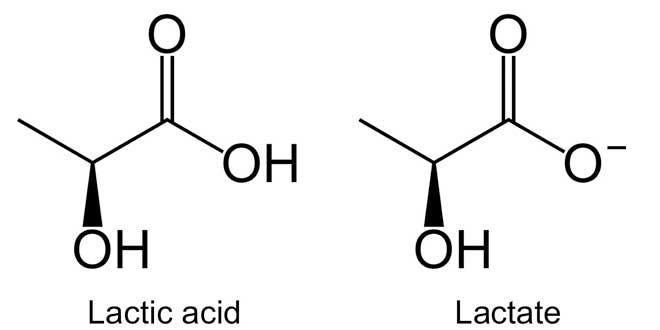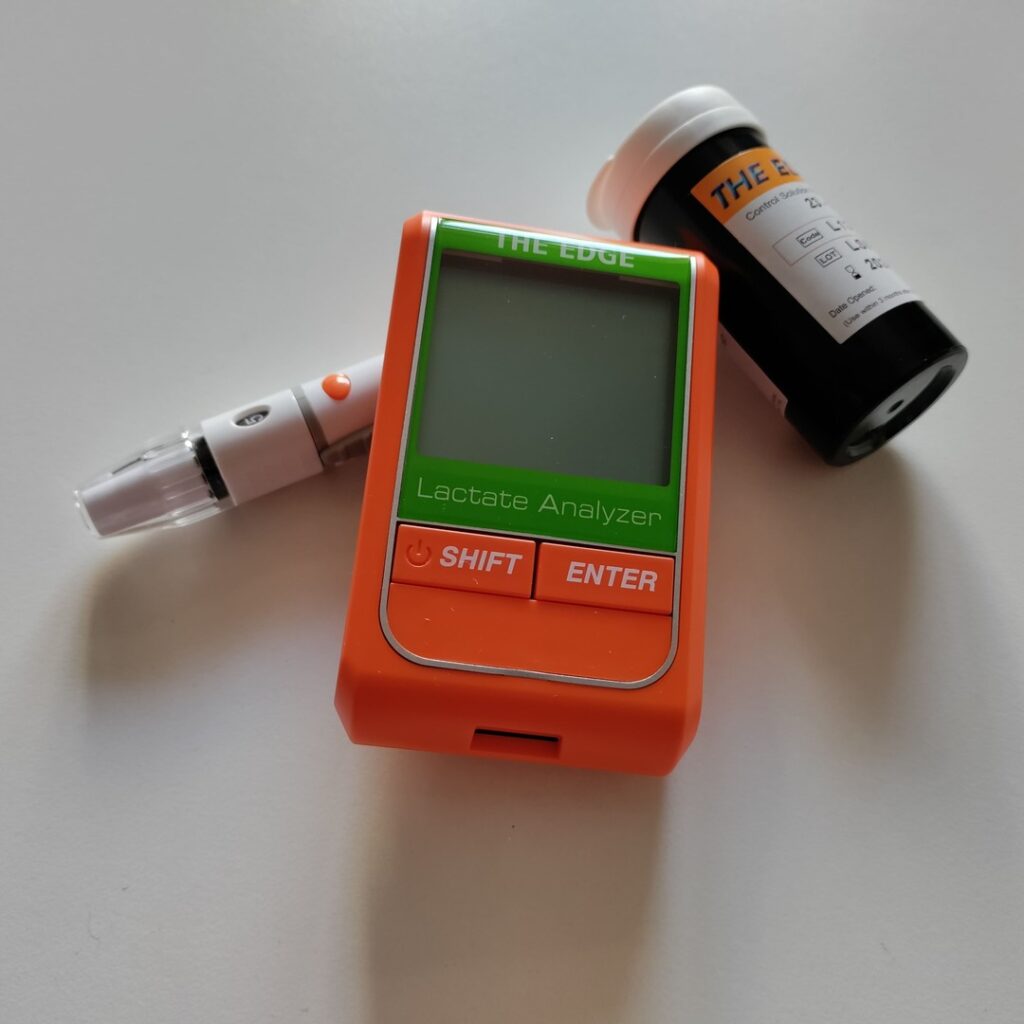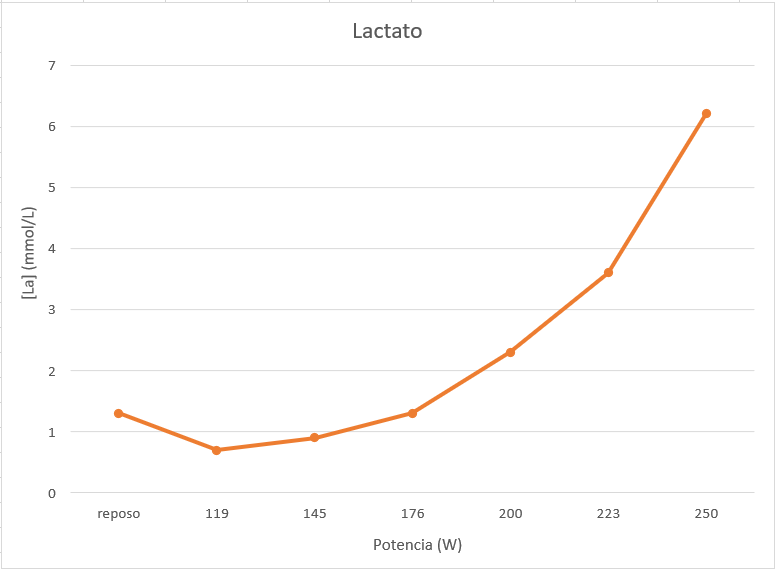Table of Contents
- What is lactate?
- How do we measure lactate?
- Functions
- The relationship between lactate and fatigue
- Why lactate testing can be useful?
In the realm of sports and fitness, optimizing performance is a perpetual pursuit. One key to unlocking athletic potential lies in understanding the body’s response to exertion, and that’s where lactate testing comes into play. Lactate, often considered a byproduct of intense exercise, holds valuable insights into an individual’s fitness level and training needs. In this comprehensive guide, we delve into the science behind lactate testing, exploring its significance, methods, and practical applications. Join us on a journey to elevate your training knowledge and achieve peak performance through a deeper understanding of your physiology.
What is lactate?
The body has different ways of obtaining energy, known as metabolic pathways, and depending on the type of effort (duration, intensity, energy demand), it will predominantly use one or another. The main pathways include the anaerobic alactic or phosphagen system, which is used for very short-duration efforts (1”-15”), the anaerobic lactic or glycolytic pathway (maximum efforts of 20”-1:30”), and the aerobic pathways (oxidation of carbohydrates and fats) for efforts longer than the previous ones.
An analogy can be made with a hybrid car, which has two engines and uses one or the other depending on the current needs. The electric motor can be used in the city where it is more efficient, and the gasoline engine can be used on the highway as it has greater autonomy. In the case of needing maximum acceleration, both engines may be used together. Similarly, the human body’s energy pathways operate in a comparable way. The fastest pathways (anaerobic) have limited autonomy, while those with greater autonomy are slower to activate and can generate less energy. Therefore, the body must constantly seek the best way to use these pathways as needed. This phenomenon is known as metabolic flexibility.
Well, lactate is a byproduct of the anaerobic lactic or glycolytic pathway. For every molecule of glucose (C6H12O6, which has 6 carbons) used to obtain energy, two molecules of pyruvate are generated. These, in the absence of oxygen, convert into lactic acid (C3H6O3, with 3 carbons) or lactate (the same but with one hydrogen atom less). Energy is also generated through this process. Therefore, by measuring the blood lactate concentration, we can determine the energetic contribution of the anaerobic system to physical exercise.

How do we measure lactate?
[La] = blood lactate concentration. [La] is measured with a portable device, as shown in the photo below. This device uses a small blood sample collected with single-use reactive strips. A sample is usually taken from the earlobe or a finger and is related to a specific intensity level (heart rate and/or power). Since blood is measured in a different location than where the exercise is performed (legs), it’s essential to consider that lactate values will not be the same as in the muscles. For instance, if a muscle biopsy is performed, it may take some time to reach maximum levels after finishing an effort because lactate has to leave the muscle and enter the bloodstream.

Its concentration is usually measured in mmol/L. Lactate values are typically below 2 mmol/L at rest, between 1.5 and 4 during long-duration exercises, and can reach values above 15 mmol/L in anaerobic efforts of maximum intensity (1′ at maximum intensity).
The lactate test is specific to a particular sport; therefore, for a cyclist, taking a lactate test on a treadmill would not be useful since the results would differ from a test on a cycle ergometer (stationary bike). Triathletes, for example, would need to perform a separate lactate test for each sport (swimming, running, and cycling) to obtain reliable information.
Functions
Contrary to the common belief that lactate is detrimental, it actually plays a crucial role as an alternative source of energy. In situations where oxygen levels are low, such as during high-intensity exercises, lactate enables the production of ATP, the primary cellular energy source, to continue. Essentially, lactate acts as an additional “fuel” that the body can use to sustain physical activity when oxygen resources are limited. Most lactate is produced in type II or fast-twitch fibers and can then be transferred to type I or slow-twitch fibers to be oxidized within the mitochondria or released into the bloodstream for use by other tissues. This phenomenon, where fast fibers generate lactate and it is sent to slow fibers for oxidation, is called the lactate shuttle. Some of these other tissues that can utilize this “surplus” of lactate include the heart or the brain, as they have a higher affinity for lactate compared to glucose as an energy source.
If it is not oxidized, this lactate can be converted back into glucose through a process called gluconeogenesis that occurs in the liver via the Cori Cycle. In fact, lactate is the major precursor to glucose.
In addition, it has other functions as metabolic signaling, meaning it acts as a messenger sending information to other tissues, thereby regulating certain aspects of metabolism. For example, it has been observed that high concentrations of lactate inhibit the oxidation of fatty acids. It also regulates gene expression and certain endocrine functions, acting as a hormone. This is why renowned researchers like George Brooks or Iñigo San Millán coined the term “lactohormone,” due to these recent findings that go far beyond defining lactate as a simple byproduct of a metabolic pathway. Currently, its relationship with metabolic diseases such as type 2 diabetes is being studied, as well as its connection to cancer, as cancer cells generate much more lactate than healthy cells (Warburg effect), or even with diseases like Alzheimer’s.
The relationship between lactate and fatigue
During intense exercise, it’s common for lactate levels to increase in the muscles. Previously, lactate was believed to be the main culprit for muscle fatigue. However, current understanding suggests that lactate itself is not the villain but rather a key component in muscle pH regulation. Fatigue is more closely related to the accumulation of hydrogen ions and the resulting acidosis in the muscles. In other words, lactate is not the direct cause of fatigue, and its role is more complex than initially thought. Nevertheless, we can still say that higher concentrations of lactate are closely related to metabolic acidosis or that sensation of burning or swelling in the legs after short and intense efforts.
Why lactate testing can be useful?
With the information mentioned earlier, we know that by measuring lactate concentration ([La]) in the blood, we can get an idea of how our body obtains energy and make relevant decisions to adapt our training optimally.
For example, it is not the same to sustain 200w at a [La] of 1.7mmol/L than at 4mmol/L. In the first case, the athlete will likely be below their first ventilatory threshold (equivalent to Z2), and in the second case, they will be close to their second ventilatory threshold (equivalent to Z4). Therefore, the first cyclist at 1.7mmol/L would not only be much fitter but also using a significant amount of fatty acids as an energy source. Meanwhile, the other would be exclusively using carbohydrates as an energy source.
The lactate test serves the following purposes:
- Adjusting the training zones
- Understanding the athlete’s metabolic response to a power output
- Assess the metabolic changes experienced by the athlete
- Make decisions in the training process
We can perform different tests, both under laboratory conditions (on a stationary bike) and outdoors (on the road). Among the most commonly used are the MLSS (maximum lactate steady state), the incremental test or lactate curve, and the VLa max.
MLSS: With this test, we aim to identify the maximum intensity at which the athlete can pedal without a considerable increase in [La]. Starting from an estimate of this point, the athlete pedals continuously at that intensity, measuring lactate every 5-10 minutes. If the concentration rises, the intensity is lowered by 15-20 watts, and the test is repeated. If it doesn’t rise, the opposite is done.
Lactate curve: Different steps are performed at a constant intensity of 5 to 10 minutes, and [La] is measured at the end of each step. The intensity is increased, and the process is repeated until the professional deems it appropriate. It can be done on a cycle ergometer (static bike with a power meter) or outdoors on the road, also with a bike with a power meter, following the same road section and going up and down.

VLa max: Maximum sprint, usually around 20 seconds, where the concentration is measured pre- and post-exertion at different intervals (1 minute post, 3 minutes post, etc.) to find the maximum achieved concentration and thus calculate the maximum lactate production rate ([La]/second). VLa max values range from 0.15 to 0.95 mmol/L/s. Values close to or above 0.9 can be considered high, around 0.5 as medium, and below 0.3 as low.

In the case of the athlete in question, the result was 0.84 mmol/L/s, which is a relatively high value. This indicates that the athlete is very explosive and highly dependent on glucose metabolism. Therefore, they likely have a low fat oxidation rate and may struggle with long-duration workouts (>3h) or long intervals (>10min). Their strengths are likely explosive races in the style of XCO or races with a maximum duration of 1 hour, such as criteriums, with frequent changes in pace combined with recovery periods.
To calculate this VLa max value, a maximum sprint of 20 seconds was performed, and the difference in lactate between the maximum recorded value (which is why 3 samples were taken just after the effort) and the resting value was assessed. In this case, 15 – 1.5 = 13.5, which is the increase in lactate experienced in the 20-second effort. To calculate VLa max, this value needs to be divided by the elapsed time. The total time was 20 seconds, but typically, the value of 16 seconds is used since the first 4 seconds primarily use the anaerobic alactic pathway (not dependent on lactate). Therefore, VLa max = 13.5/16 = 0.84 mmol/L/s.
In conclusion, the lactate test can be a valuable tool for both the cyclist’s daily training routine, confirming that they are training in the correct zones, and for assessments at different times during the season. This type of assessment allows us to delve into the metabolism of the athlete in question. Since it is a parameter closely related to energy production, we gain a qualitative picture of performance that cannot be obtained through conventional means such as power testing, speed, or heart rate tests, although the latter is closely related to lactate. Therefore, we not only know how fast or slow our cyclist is going but also understand the reasons behind it.



